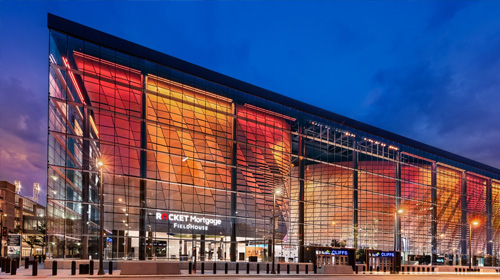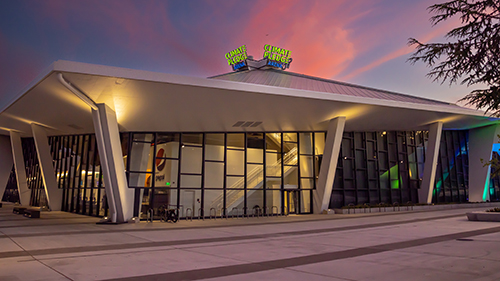AT&T Stadium transforms fan experience; achieves game-changing savings with digital DAS network
CommScope delivers game-changing fan experience to AT&T Stadium with digital DAS network

Up to 87 percent
less power consumption

Up to 75 percent
less cooling consumption

65 percent
less rack space

82 percent
less floor space
AT&T Stadium is a world-class athletic structure that provides ultimate once-in-a-lifetime experiences. Opening in 2009, the retractable roof stadium is home to the Dallas Cowboys, the Cotton Bowl Classic and the Big 12 Championship Game. It’s the largest NFL stadium, with 80,000 to 100,000 seats.
“CommScope has taken our connectivity to a whole new level. We’re achieving our operational and fan engagement goals by providing instantaneous,
low-latency connectivity throughout the entire venue.”
Matt Messick, chief information officer,
Dallas Cowboys
When fans of the largest NFL stadium demanded more capacity and bandwidth for video streaming and digital commerce, AT&T Stadium knew it was time to replace the decade-old analog distributed antenna system (DAS) with something better. Home to the Dallas Cowboys, the Cotton Bowl Classic and the Big 12 Championship Game—which can draw up to 100,000 fans at a time—the stadium required a solution so considerable that, upon completion, it would become the world’s largest indoor DAS network.
Starting from the ground up, CommScope worked with the Cowboys to redesign a new network that would replace the analog equipment with CommScope ERA® digital DAS network. Once deployed, this new system would meet all the 5G connectivity requirements yet require dramatically less space, equipment, electricity and maintenance than the legacy analog network.
The redesigned system eliminated the need for traditional DAS analog conversion stages by keeping the entire system digital. CommScope’s ERA DAS employs a Common Public Radio Interface (CPRI) to link the ERA centralized radio access network (C-RAN) to Nokia baseband equipment—driving industry-leading sustainability and reclaiming 5,000 square feet of space. In the end, the new end-to-end digital DAS network called for 660 zones and 1,000 DAS antennas.
The result has been a fan-first connectivity experience that allows the stadium to engage with fans in ways it couldn’t with the legacy system. For example, fans can now order and receive food and beverages without ever leaving their seats simply by scanning a unique QR code on their seat.
Requirements
- Update traditional analog DAS system
- Deliver strong signal everywhere in NFL’s largest stadium
- Provide more capacity and bandwidth
Solutions
- ERA digital DAS
- 660 zones
- 2,452 ERA/CAP remotes
- 1,000 DAS antennas
Benefits
- Up to 87 percent less power consumption
- Up to 75 percent less cooling consumption
- 65 percent less rack space
- 82 percent less floor space


